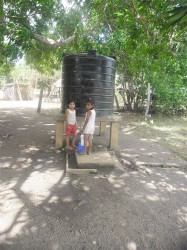There is always something happening in Yupukari. Whether it’s catching caimans, caring for turtles, playing football, surfing the internet, constructing something or just hanging about swapping stories, there is always lots to do.
This land sandwiched between the Kanuku and Pakaraima mountain ranges, in the midst of the Essequibo and Amazon basins, is a conservationist’s dream and wildlife haven. Here giant anteaters roam, rare birds call the savannah home and giant black caimans rule the waters of the surrounding lakes and the meandering Rupununi River.
It is a land of rare beauty, in the rolling hills of the central Rupununi savannahs in Region Nine.
Home to about 500 mainly Macushi Amerindians, the village is a mix of slowly changing traditional ways and modernity.
Isaac Rogers, a former toshao of the village says Yupukari was so named as a result of a fight between a shaman or paiman and a “bad tiger” that ate people and stemmed from the words ‘epi’ ‘kari.’” The 66-year-old former chief said that Anglican missionaries first settled where the community is now located and at the time there was no airstrip and the governor travelled from Georgetown up the Essequibo via boat and then up the Rupununi River.
According to Rogers, later there was a landing at Yupukari where amphibious planes could land and the governor-general did so and took a bullock cart to Lethem.
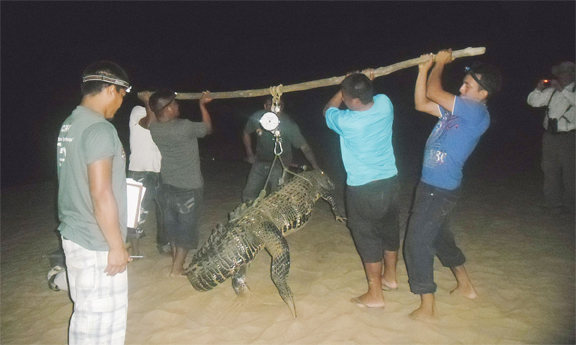
With the coming of the missionaries in around 1902, Rogers said, the Amerindians who lived in widely dispersed locales in the surrounding area began to come to live closer together. A church and school were established, and Rogers recounted how he began attending classes in 1953 when there were only 15 students with one teacher. He said that Yupukari was called St Mary’s Anglican Mission by the missionaries. The St Mary’s Ranch is still in existence and is overseen by a church committee comprising villagers.
Rogers said that the village has changed over the years. “We forget our dialect, we don’t speak a deep, grammatical Macushi language any more,” he said. “The people who know to speak Macushi good, they all dead.” The former village chief said that the elders have been encouraging young people not to forget their culture, and now there are monthly campfires attended by the villagers where cultural practices such as the Parishara dance, the Hummingbird dance and other traditional practices are showcased.
However, he said, it has been a long time since any of the dances were done in the way they were done before. Rogers described the ‘Warebang,’ which he said was an adult athletics dance and involved the leader sending the participants early in the morning to a starting point about 10 kilometres outside of the village. He said that the participants would run to a house in the village but towards the end would have to pass a person guarding the building. If the runner was caught and lifted up, he was forced to sit and wait until the completion of the race before he could get a drink. However, if the runner managed to get past the person guarding the door, he would then have to get past women pelting him with parakari balls to prevent the runner from getting to the drink. The former chief said that after the race was completed and a brief period of rest, the men would bathe and dress, decorating themselves with ashes and there would be drinking and dancing. “Whole night and day, they will continue the party until they drink out the drink,” he said.
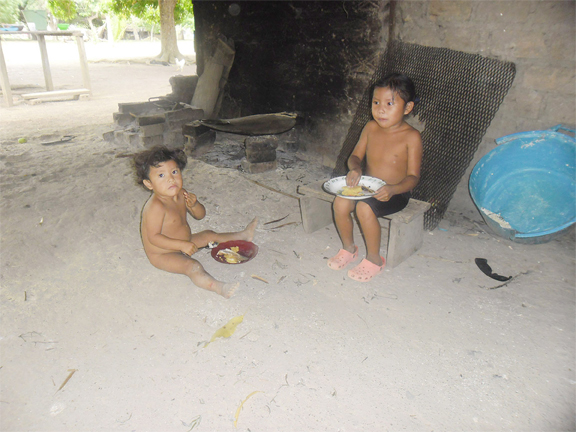
at lunch in Yupukari
Rogers further related that the Parishara dance and the Hummingbird dance are usually done at the same time. He said that the Parishara dancers are usually in costume and persons from other villages are normally invited and they come with musicians. He said that the Parishara dancers would come dancing to the home where the celebration is being kept. Inside, he related, would be the Hummingbird dancers who would be painted with annatto.
They usually played a bamboo flute and when the two groups of dancers finally met inside, the Hummingbird dancers would dance in a circle surrounded by the Parishara dancers. “They will dance backwards to confuse the Parishara (dancers),” he recalled, adding that the hummingbird dance is a fast dance while the Parishara dance is slow. These dances are done, for example, at the commissioning of a new building.
However, the former chief recalled that the last time he witnessed one was at about 1964-65. “That was the last Parishara dance I attended. Afterwards I never see one again,” he said.
Rogers said that the village has changed much since. He said that in the past warishis were used to bring cassava from the farm but now there are bicycles and motor-cycles. Wooden graters with stone chips em-bedded are no longer used and there are also no cowhide or ite palm slippers, he said.
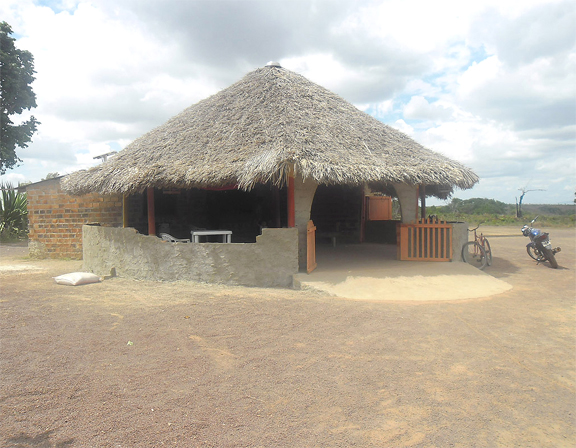
“You can’t see the paiman no more today,” he added, but mentioned that there are still a few Amerindians who “blow and heal.” People still practise self-help, use bows and arrows and drink traditional drinks like parakari, he said. But seines and cast-nets are also used to fish.
The former village chief said that traditional practices such as one to ensure a plentiful supply of fish are also no longer followed. He related how the old people made offerings of parakari and banana wine to the ‘toshao of the fishes’ and this ensured that they always had fish. “The old people pick up rock from the bottom of the water, wash it with the drink and talk to the rock and say they want more fish,” he said, noting that there were specific rocks for different fishes. He said that the paiman would chant and “work” on the rock. “He will tell the rock not to do bad things…we will help you and you will help us,” Rogers recalled; “Today, we don’t do that no more.”
Today, Yupukari is a village that has lost some of the old ways but is trying to preserve some of the traditions while at the same time learning about modern technology in a way that seems to be working for the village.
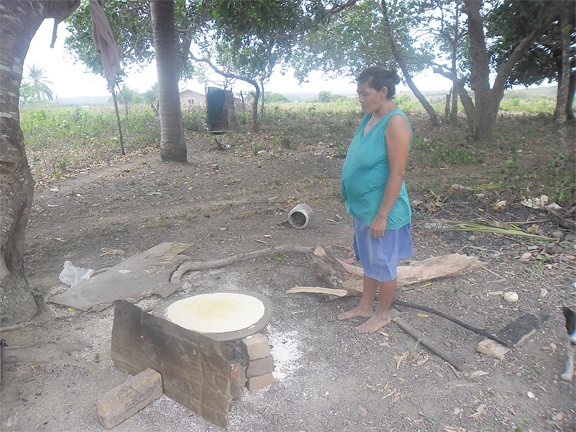
The current toshao, Rudolph Roberts Senior, has initiated a project where he hopes to have all the houses in the community built of burnt brick and concrete with zinc rooftops within the next three years. While many houses in Yupukari are still made of mud brick walls and thatched roofs, Roberts explained that the palms used to thatch the roofs have become scarce over the years and the people have to go a farther distance to get these palms. The cost has also risen and they have to be replaced about every ten years. He said that the new houses are more durable and although they will cost more in the short term, the long term benefits will include conservation of the remaining palm trees. He noted, however, that they need permission to harvest more timber for the project since the community only has a small amount of forest and it has been seeking an extension to their titled land. The community is keen about conservation, he stressed, but also wants development in a sustainable way.
The project seems to have the support of the community. The villagers are divided into five groups and during the week, almost everyone can be found at the various worksites assisting in making the burnt bricks. Emelita Thomas, working with over a dozen persons, both male and female at the shore of the
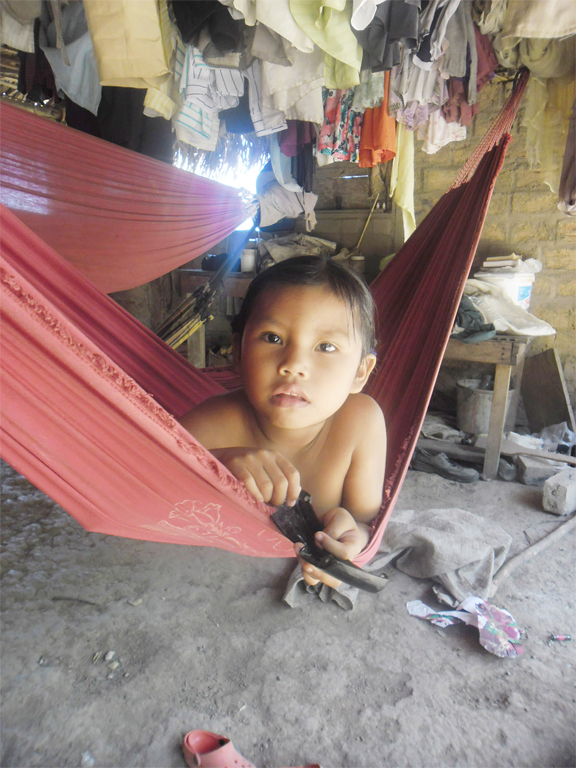
Awarikuru Lake said that she would prefer a zinc-roofed house. “Nowadays, the thatch is hard to get… you have to go far to find it, cut it, leave it for four to five days, then drag it home. It hard,” she said. The project began in December and she said that they usually turn up to work from between 8.30am to 9am and leave at about 4pm from Monday to Friday with a half-day on Saturdays. Everyone in the village is expected to participate but those who have jobs make contributions of food or money, she said.
Jobs are scarce in the community, though with the black caiman conservation project, a number of positions have been created. However, many have left to seek jobs elsewhere.
Mike Mandook, 30, was one of those who left the community to seek a job. He worked in Georgetown for seven years as a security guard before returning because he missed his family. He did some carpentry but this was not enough and after three years, it was time to seek another job and last October he left to seek a job in the mines, but returned shortly after. “What make I change my mind too is the way people get in accidents at the backdam,” he explained. Now he is seeking a job at a commercial farm that is set to scale up its operations several miles away from Yupukari.
“Nowadays you can’t stay doing nothing. You have to do something,” he added. He said that apart from the limited job opportunities, life in Yupukari is fine. “It nah really hard cos most of the time you go and do fishing, plant farm, plant cassava and in the afternoon you come out and play football,” he observed.
Headmistress of the Yupukari Primary School, Maisie Li said that she began teaching there in 1973 when she was 15 years old though she was away for several years for training and other projects. She will be retiring in May. “For all my life I lived here,” she said. She said that the first school in the community was started in 1924 by an Anglican priest. The Yupukari Primary School now has 159 students with six teachers, although it needs two
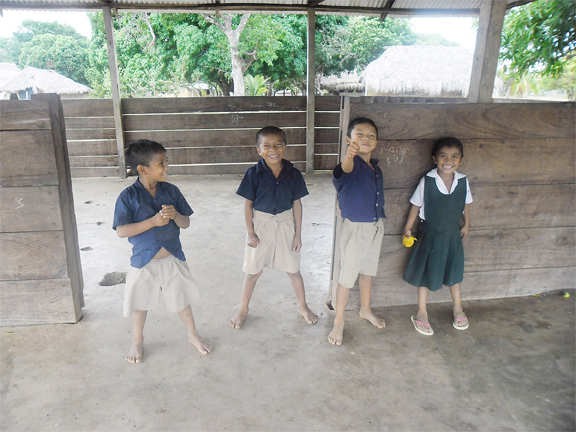
more.
The HM said that the available jobs include teaching and the health worker while some persons are employed with Caiman House and some with the Hot Meals programme which has wound down, while others leave the community. “Most of the young children, they go to Brazil to do domestic work or farming,” she added.
Li said that over the years, the standard of living of the village has improved. Religious life has also expanded with new churches like the Church of Christ and the Christian Brethren arriving in the community in addition to the Anglican Church. “The lifestyle of most people has changed,” she said. According to Li, the name of the village means ‘Fighting Hill’ and it came about as a result of two ‘tigers’ fighting at the riverside.
Health-wise, health worker Sylvester Holden said that malaria is under control though transportation is a major issue. He said that he only had a bicycle to visit patients who cannot come to the health centre, sometimes when it is an emergency, while most times, they are far from the village. At the time of Stabroek News’ visit, a man, Ivor Antone was bitten by a spectacled caiman and was transported to the health
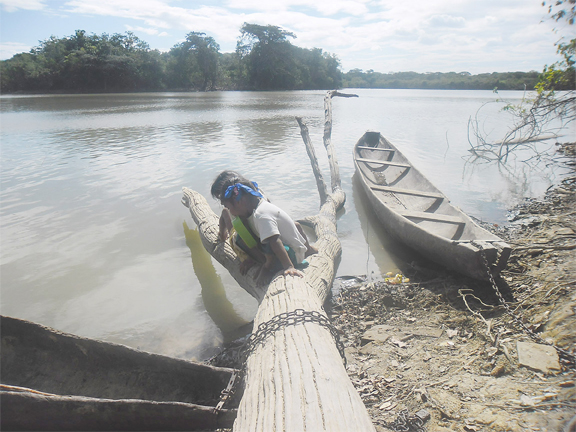
the wonders of the deep or maybe the
caimans at Awarikuru lake at Yupukari.
centre in a bullock cart. He was eventually referred to the Lethem Hospital, and had to wait for a vehicle from Lethem to arrive. Holden also said that sometimes when vets visit, they do not do much. “Vet does come here and go back. They don’t do anything at all,” he said. He said that agricultural officers could visit people’s farms and check on the pests and diseases affecting the crops but do not. “If they gotta bring poison, they bring it, drop it and they gone back. They never do nothing,” he said.
There are not many shops in the community and many items are expensive. At the village shop, Karlota Duncan related that a pound of flour is sold for $120, similar to rice and sugar. A small tub of butter sells for $480. At the community’s lone bar on a hill on the outskirts of Yupukari, the A&A Bar, Mary Roberts sold a Banks beer for $380. After leaving school, she went to work in Lethem but did not like it there and returned to Yupukari. “In Yupukari, I living free,” she said. “You can do fishing, do gardening… when you go Lethem, you got to work, spend nuff money.” She said she hoped to get married “if it’s not [a] mistake.”
However, persons like Elaine Laurindo still make cassava bread. With seven kids in school, at the time she was making four cakes of cassava bread and eight cakes of parakari to sell.
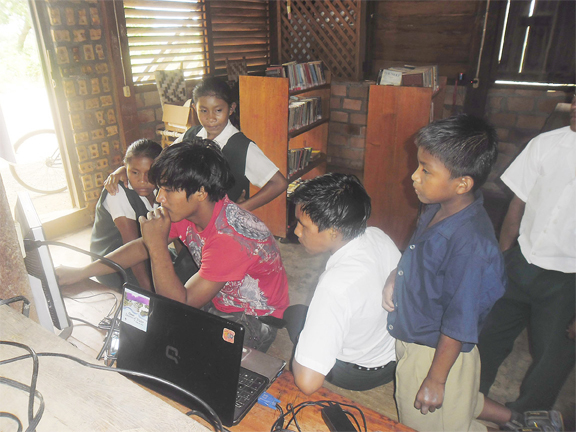
In Yupukari, there is always lots to do. Wildlife clubs, hiking, visiting the attractions of the beautiful community such as the ruins of an old fort, bird watching, the attractions of the community are many. At Caiman House − the hub of Yupukari − with its internet access, library and guest house, persons drop in at all hours to use the facilities or just hang about. The money earned from tourism supports the continuing research and virtually all is ploughed back into the community.
This Amerindian village with its many attractions is slowly changing and is open to the world, but many traditions still continue. There is an ongoing yellow spot sideneck turtle conservation programme but at times, some things cannot be resisted even if it is once a year. Said Li the Headmistress with a laugh: “There is a habit here that every Old Year’s Day, an old man and his wife have a turtle porridge dinner and everyone looks forward to it.”
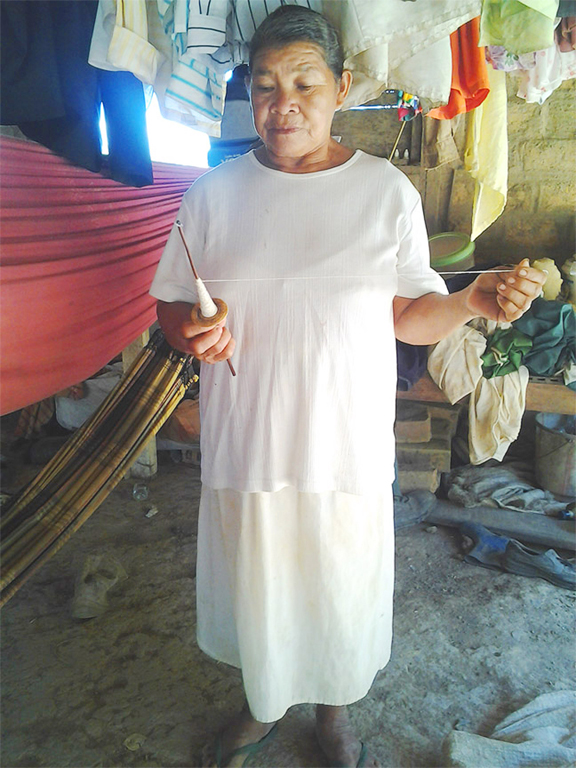
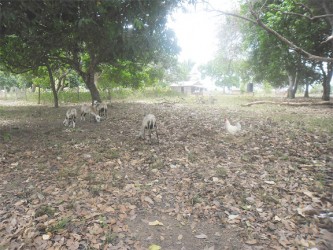
sheep on the other side.
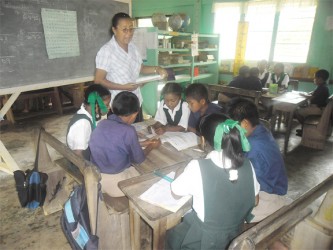
Maisie Li with her students
